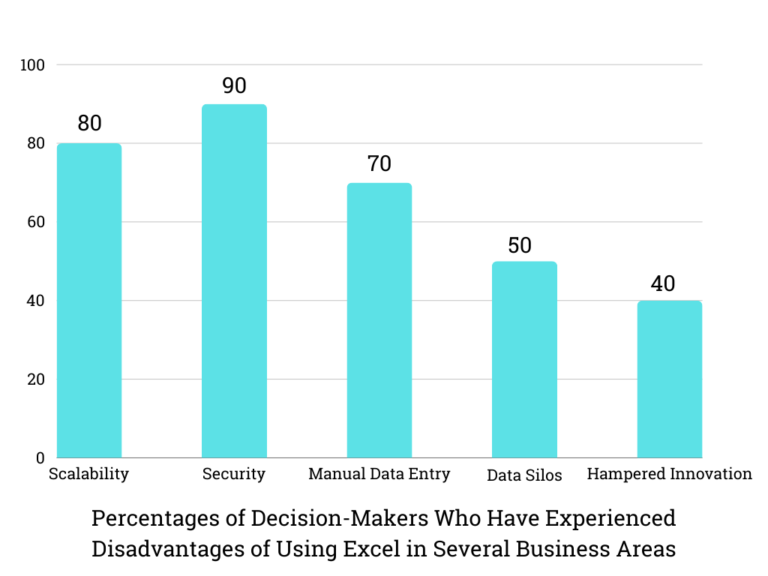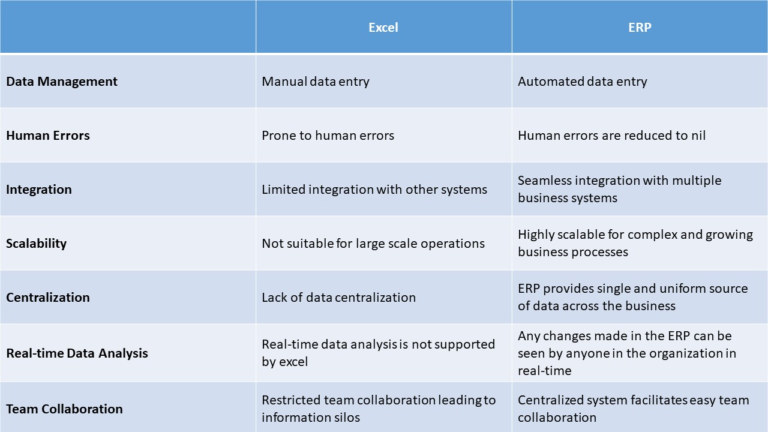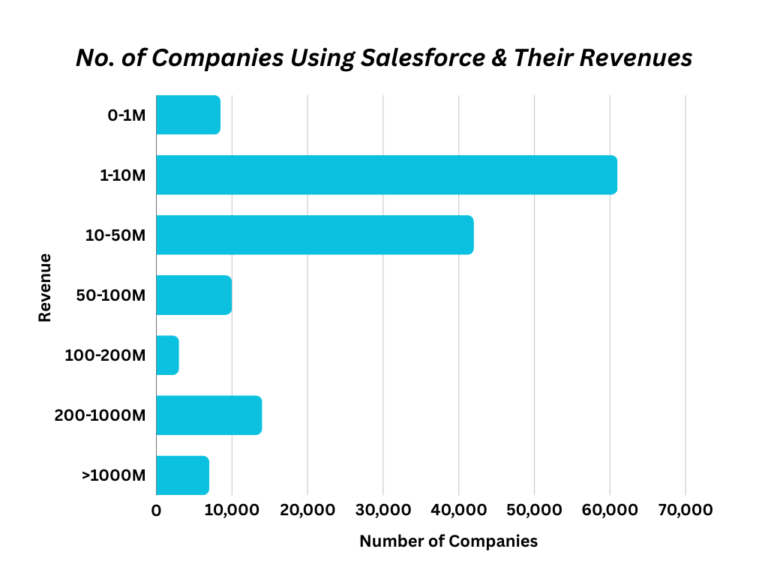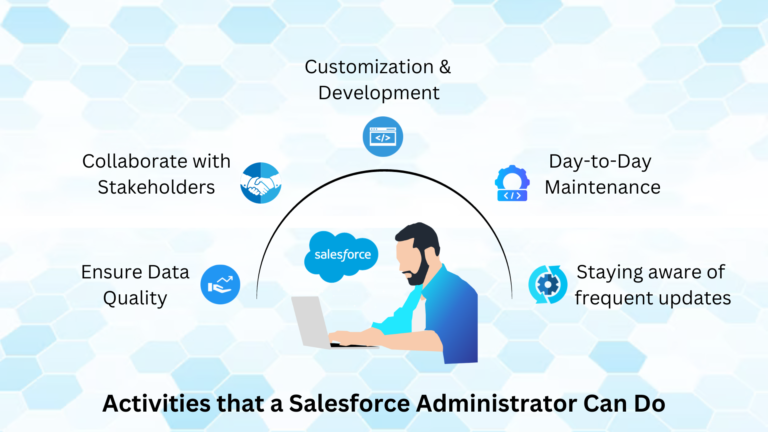All Resources
Read and get updated on how we progress
- All Resources
- Blog
- Customer Story

Top 5 Software for Textile Manufacturers
Schedule MeetingThe global textile market is projected to grow at a CAGR of 7.6% from 2023 to 2030. As this fast-paced industry continues to expand, technology has emerged as a powerful catalyst, driving innovation and efficiency. Amidst the multi-layered operations, software for textile has become the thread that binds together every aspect of this complex and dynamic industry.
From streamlining production processes to enhancing quality control, the right textile industry software can redefine the landscape for manufacturers, paving the way for transformative leaps forward. In this blog, we will shed light on the top 5 game-changing textile manufacturing software that are revolutionizing the way the industry operates.
Software for Textile: Streamlining Processes and Boosting Efficiency
- iTexClouds
- Fiix CMMS Software
- Textronics Design Dobby
- Microsoft Excel
- FastReactFabric
iTexClouds – A Cloud-Based ERP in Textile Industry
iTexClouds is a comprehensive Enterprise Resource Planning (ERP) software specifically designed by industry experts for fabric manufacturers. This textile industry software equips users with 12 modules that can cater to all aspects of the textile manufacturing process. Right from receiving an order to planning the production to exports, this textile industry-specific ERP can help with everything.
The visual loom planning module simplifies the production planning by allowing manufacturers to view all their looms on a single screen. With the barcoding feature, fabric manufacturers can monitor and track inventory and finished goods at all stages of the production process.
In addition, the ERP also allows seamless 3rd party integration to facilitate data exchange between different applications and allow users to take data-driven decisions. What’s best? It can be easily implemented within 1 week to 3 months, depending on the scale of manufacturing.
Benefits of iTexClouds ERP for textile manufacturers:
- 2-3% reduction in inventory carrying costs
- 2-3% reduction in inventory levels
- 3-5% increase in profit margin
- 25-30% increase in employee productivity
- 50-70% increase in customer satisfaction and retention
Fiix CMMS Software
The Computerized Maintenance Management Software for textile industry by Fiix allows textile manufacturers to manage all their maintenance, including thousands of assets, work orders and parts, in one place, with just a few clicks.
Powered by AI, this textile industry software helps maintain uptime and productivity, mobile work order management, and predictive maintenance. It also provides real-time reporting and analytics and helps take care of audits, compliance, and safety.
The mobile app allows offline access to asset records anytime, anywhere. Textile manufacturers get complete visibility of all open and upcoming work orders across various sites.
The software allows automatic maintenance scheduling upon anomaly detection and the drag and drop feature allows easy creation of a data hub to facilitate data-driven decisions. To top it all, there is a single dashboard that allows tracking all compliance tasks in one place.
Benefits of Fiix CMMS for Textile Manufacturers:
- 27% reduction in unplanned downtime
- 10% reduction in operating and production costs with the help of Fiix’s analytics platform
- Creating and assigning work orders take less than 20 seconds
- The audit trail tool allows finding records in less than 30 seconds
- Seamless tracking of asset maintenance costs to justify CapEx decisions
Textronics Design Dobby
Design Dobby is a CAD/CAM software used in textile industry for dyed yarn and dobby woven fabrics. This software provides a comprehensive solution to designers and allows them to visualize and execute designs in real time.
With its automated capabilities, it can seamlessly incorporate weave patterns in designated sections, incorporate desired warp and weft structures into textile designs, and integrate colors according to loom specifications.
With this software, designers can eliminate the need for getting into machine specific details like values, colors, etc. The auto-generation of unlimited design patterns allows manufacturers to respond to customer needs quickly. It also supports all types of yarn creation and ensures complete size and color accuracy.
The simulation module simplifies dobby weaving by bringing it to life on a screen. There is a design database that stores all the designs and makes it easy for designers to locate designs as per their requirements.
Benefits of Design Dobby for Textile Manufacturers:
- Easy creation of true-to-life simulations for all types of fabrics
- Effortless creation of complex weave structures by combining different weaves
- Seamless integration of dobby effects directly onto designs in ornamentation or extra warp mode
- Automatic pattern creation based on a selected design
- Unlimited yarn count simulation from 0.01 to 1000 Ncc
Microsoft Excel
Microsoft Excel has been one of the most popular software for the textile industry for decades. Manufacturers rely on Excel to track and manage various aspects of their operations, including inventory. It provides the flexibility to categorize items, assign identifiers, and monitor stock quantities accurately.
With customizable templates, manufacturers can integrate Excel into their workflows and make informed decisions based on real-time information.
It gives flexibility in designing and customizing spreadsheets to meet specific business requirements. The intuitive features such as sorting, filtering, and conditional formatting enhance usability. In addition, Excel's validation rules help ensure data accuracy and integrity.
Benefits of Excel for Textile Manufacturers:
- Customized spreadsheets for tracking and analyzing various aspects of the business
- Easy calculation of stock totals with Excel formulas and functions
- Maintain order records, including customer details, order quantities, and delivery dates
- Create comprehensive reports, charts, and graphs to visualize financial performance
- Track production progress, monitor deadlines, and optimize resource allocation
FastReactFabric – A single platform to combine fabric buying and cutting
FastReactFabric is a comprehensive fabric planning software for textiles that seamlessly integrates fabric buying and fabric cutting operations into a single platform. By combining these critical processes, textile manufacturers can gain valuable insights into real-time fabric usage and wastage.
The software offers accurate fabric buying forecasts, precise planning forecasts for increasing colorways and complexity, and optimized cutting plans that remove bottlenecks and reduce remnants.
Textile manufacturers benefit from the eliminated manual efforts for fabric planning resulting in reduced duplication of data entry, workload, and errors. This software leverages big data analytics, eliminating errors and saving time spent on estimating size-ratios, wastage, and report compilation.
It can be seamlessly integrated with CAD and ERP systems facilitating smooth data exchange and enhances operational efficiency. The software also allows the senior management to effortlessly track performance across key business metrics.
Benefits of FastReactFabric for Textile Manufacturers:
- 90% reduction in fabric planning and buying time
- 5% reduction in fabric cost
- 100% end-to-end fabric planning
- A 360-degree feedback loop between cutting and booking
The textile industry is witnessing rapid growth and evolution, with technology playing a pivotal role in driving innovation and efficiency. The adoption of software for textiles has become essential for manufacturers looking to streamline operations, enhance productivity, and meet the demands of a dynamic market. These software solutions empower manufacturers to optimize processes, improve quality control, and make data-driven decisions.
By leveraging advanced technologies, such as cloud-based ERP systems, maintenance management software, CAD/CAM tools, and versatile tools like Microsoft Excel, textile manufacturers can achieve cost savings, increase productivity, and enhance customer satisfaction. Embracing these technological advancements is crucial for staying competitive and driving transformative progress in the ever-evolving textile industry.

eCommerce Integration to Reduce Cart Abandonment Rate
Book a MeetingCustomer Profile:
The customer originally started as a farm supply store. But, with changing market needs, they evolved into a prominent outdoor power equipment provider. Committed to continuous excellence and innovation, they ventured into the “power equipment superstore” model and have been delivering world-class service to their customers.
Problem Statement:
The customer was facing a weekly cart abandonment rate of up to 10%, corresponding to an average order value (AOV) of $10,000. They wanted to address the abandonment rate by re-engaging customers, thereby boosting sales through their website.
Solution:
To solve the challenge of cart abandonment and re-engage customers in the buying process, Infopine’s solution involved:
- eCommerce integration with the Klaviyo marketing automation tool to enable consistent monitoring and sending notifications to customers reminding them of the items present in their carts.
- Improving the checkout UI/UX process to ensure simplified order placement procedure for customers.
- Scripting messages for implementing functionality for mail notifications, depending on user behavior, by identifying abandonment stages.
Technology Used:
GCP, Java, Oracle, Kubernetes Microservices based architecture, Klaviyo, Multi-tenant architecture for backend services, iFrame and API integration with 3rd party
Results:
Our solution of eCommerce integration with Klaviyo marketing automation tool resulted in:
- Reduced cart abandonment by 60%
- Increased customer average lifetime by 5%
- Increase in total number of orders by up to 20%
- Increased Average Order Value
- Enhanced overall customer satisfaction and loyalty
- Positive brand image and improved competitive advantage
Contact Us
So, what are you waiting for? Don't let your competition get ahead of you. Contact us today to discuss your eCommerce integration needs and let us help you achieve your business goals!


B2B eCommerce Customization to Improve User Experience
Book a MeetingCustomer Profile:
Customer is known for delivering supply chain solutions to the Fortune 1000+ companies with the help of 200+ distributors operating from more than 2500 branch locations. Serving multiple industries, the customer is committed to delivering top-notch and cost-effective services.
Problem Statement:
Customer wanted B2B eCommerce customization to eliminate the struggle of Ariba customers of navigating between Ariba and their eCommerce site. Customer wanted to streamline the procurement process of the Ariba users by improving the punchout capabilities to enhance overall efficiency in B2B transactions.
Solution:
To address the challenges and to fulfill the customer’s need of B2B eCommerce customization, Infopine helped with:
- Designing and customizing the eCommerce platform to aligning with the customer’s requirement and hosting on GCP cloud
- Integrating third-party solutions to enhance overall system capabilities
- Provide robust integration support for punchout capabilities for Ariba customers
- Taking the punchout capabilities to the next level to ensure accurate product identification during order placement
- Implementing location-based warehouse identification to streamline user experience based on geographical location
- Lastly, commitment to providing ongoing support for maintaining the application and continuous enhancements
Technology Used:
GCP, Java, Oracle, Kubernetes Microservices based architecture, multi-tenant architecture for backend services, iFrame and API integration with 3rd party solutions
Results:
Our expertise in B2B eCommerce customization helped our customer achieved:
- Enhanced user engagement resulting in 10% increase in customer lifecycle
- Improved user experience leading to 18% increase in customer retention
- Simplified checkout process due to minimized clicks
- Streamlined product discovery for customers
- Reduced delivery time due location-based warehouse identification
Contact Us
So, what are you waiting for? Don't let your competition get ahead of you. Contact us today to discuss your eCommerce customization needs and let us help you achieve your business goals!


B2B eCommerce Customization for Wholesale Distributor
Book a MeetingCustomer Profile:
Customer is a reliable and renowned wholesale distributor of kitchen, bath, and lighting products operating from more than 26 locations across Georgia, Tennessee, and South Carolina. They have been successfully delivering world-class products to their customers for over 50 years with the aim of enhancing their daily lives.
Problem Statement:
Customer was experiencing a high exit rate on their B2B eCommerce site which was negatively impacting their customer retention and revenue. They wanted B2B eCommerce customization to upgrade their site to improve user experience and reduce the exit rate.
Solution:
To help the customer achieve their goal, Infopine’s B2B eCommerce customization experts implemented the following solution:
- Customized the eCommerce platform as per the customer’s requirement and hosted it on GCP cloud
- Implemented an intuitive and user-friendly UI incorporating the brand design to improve user experience on site
- Seamlessly integrated 3rd party solutions, such as SXE ERP, to streamline order placement and delivery across countries
- Implemented location-based warehouse identification to ensure reduced delivery timelines
Technology Used:
GCP, Java, Oracle, Kubernetes Microservices based architecture, multi-tenant architecture for backend services, iFrame and API integration with 3rd party solutions
Results:
With the commitment to providing continuous support for maintaining and enhancing the application, our B2B eCommerce customization expertise helped the customer achieve:
- 8% increase in customer life cycle value
- 22% increase in customer retention
- Faster checkout process for customers due to minimized clicks
- User friendly site with easy navigation for customers
- Increased customer loyalty and brand reputation
Contact Us
So, what are you waiting for? Don't let your competition get ahead of you. Contact us today to discuss your eCommerce customization needs and let us help you achieve your business goals!


Effective ERP Solution Tailored for the Distribution Industry
Book a MeetingCustomer Profile:
Customer has been at the forefront of technological innovation in the distribution software market. With 30+ years of experience, customer has established themselves as a trusted technology partner to top distributors.Problem Statement:
The customer wanted to build an ERP solution, specially tailored for the distribution industry. They were seeking a technology partner who could support them with a highly scalable, flexible, cost-effective, and secure architecture.Solution:
Infopine played an instrumental role in fulfilling the customer’s objective. Our technology experts supported with:- Implementing an intuitive UI/UX design
- Developing re-usable components
- Building a microservice architecture
- Providing scaffolding of the framework
- Initial code implementation support
- Defining application infrastructure for hosting
- Developing Continuous Interface and Continuous Delivery (CI/CD) for seamless deployment
- Providing coding and design best practices to the customer’s team
Technology Used:
Architecture suiting Java stack and MySQL databaseResults:
With our support:- The customer built an effective ERP with a robust architecture
- They built several re-usable components to be used as libraries
- They experienced 100% team collaboration
Contact Us
So, what are you waiting for? Don't let your competition get ahead of you. Contact us today to discuss your ERP implementation needs and let us help you achieve your business goals!

User-Friendly eCommerce Platform for a HVAC Distributor
Book a MeetingCustomer Profile:
Customer is a globally renowned distributor of HVAC equipment and supplies. They have been in the industry for over 50 years and hold membership of esteemed associations including the AD HVAC, HARDI, and the Texas Air Conditioning Contractors Association (TACCA).
Problem Statement:
Committed to delivering the best customer service, they wanted to build a B2B eCommerce platform to streamline their distribution process. The platform had to be built in a way that would facilitate easy product catalogue management and customer profiles.
Solution:
Based on the customer’s requirements, Infopine built a user-friendly eCommerce platform that was customized to the specific needs of the customer.
- The platform was hosted on GCP
- The UI/UX of the new platform was designed keeping in mind the existing brand design
- Special attention was paid to maintaining highest level of user experience while designing the platform
- The platform incorporated an integrated order splitting functionality based on shipping methods.
- EPICOR-P21 integration was seamlessly implemented
- The platform also had the ability to identify nearest warehouse location based on customer location
- Continued on-going support was provided to ensure all issues are addressed and the customer requirements are fulfilled by the platform.
Technology Used:
GCP, Java, Oracle, Kubernetes Microservices based architecture, Multi-tenant architecture for backend services, iFrame and API integration with 3rd party solutions
Results:
- Enhanced product accessibility for suppliers, fostering improved collaboration and streamlined processes.
- Order splitting based on shipping method increased customer satisfaction.
- Seamless order processing ensured efficient and accurate transactions.
- EPICOR-P21 integration achieved streamlined operations and enhanced overall business efficiency.
- Customers enjoyed the convenience of identifying the nearest warehouse location for faster and cost-effective shipping.
Contact Us
So, what are you waiting for? Don't let your competition get ahead of you. Contact us today to discuss your eCommerce development needs and let us help you achieve your business goals!


eCommerce Platform Implementation for a Global Sterile Company
Book a MeetingCustomer Profile:
Customer is a global compounded sterile company, listed among the top 3 for producing high-quality pharmaceutical products that hospitals and medical practitioners across North America, Europe, and MENA use to treat patients.
Problem Statement:
The customer is driven by the vision of making their products easily accessible to as many people as possible without hassles. To fulfill this goal:
- The customer needed a B2B eCommerce portal to be developed and implemented quickly to meet their business goals.
- The solution had to be delivered within a reasonable budget, maximizing the value for the customer.
- The portal needed to provide efficient product catalog management capabilities, enabling easy navigation and search for customers.
- The solution had to offer robust customer management features, facilitating smooth interactions and enhancing customer satisfaction.
Solution:
To fulfill the client's requirements, Infopine developed a user-friendly platform that complied with all necessary regulations and streamlined product catalog management.
- Infopine utilized an eCommerce platform to design a customized B2B solution tailored to the client's needs.
- The platform was hosted on GCP cloud to enable seamless collaboration, ensure high uptime, and provide top-notch security measures.
- An easy-to-use UI was implemented, incorporating the existing brand design to maintain consistency and enhance the overall user experience.
- The platform was configured to integrate with various third-party systems and interfaces, allowing smooth data exchange and expanding its functionality.
- Legisym was integrated to ensure meeting regulatory compliances.
- Ongoing support was provided post-deployment, ensuring its smooth operation.
Technology Used:
GCP, Java, Oracle, Microservices based architecture, multi-tenant architecture for backend services, iFrame and API integration with 3rd party solutions
Results:
- Suppliers gained efficient catalog management.
- 100% transparency and regulatory compliance mitigated legal risks.
- Seamless order processing streamlined operations and enhanced efficiency.
- Increased customer satisfaction with a friendly UI and improved catalog management.
- Enhanced collaboration with real-time updates on the hosted GCP Cloud platform.
- Improved data accuracy through streamlined catalog and customer management.
Contact Us
So, what are you waiting for? Don't let your competition get ahead of you. Contact us today to discuss your eCommerce development needs and let us help you achieve your business goals!


Excel Sheet: A Risky Foundation for Your Business Operations
Schedule Meeting With a projected value of $3 Trillion by 2030, the global textile industry is continuously growing. As this industry is expanding, it is becoming increasingly complex and data intensive. Therefore, businesses operating within the textile sector must establish efficient data management processes to stay competitive.Traditionally the textile industry has relied on excel sheets, to handle their data. While excel has remained a staple in the industry for a long time, with advancing technology, Enterprise Resource Planning (ERP) systems have been gaining popularity due to their ability to integrate multiple facets of business operations. This blog aims to cover the multiple aspects of Excel vs ERP for textile industry, and why the manufacturers must choose ERP as their textile software.
This blog aims to cover the multiple aspects of Excel vs ERP for textile industry, and why the manufacturers must choose ERP as their textile software.Excel vs ERP: Quick Differences
 Need for ERP in the Textile IndustryInsufficient use of appropriate technology has significantly contributed to the textile industry's struggle with low-capacity utilization as low as 40-50%. This can be attributed to the industry's complex nature, involving multiple processes like order processing, production planning, procurement, inventory management, finance management, and so much more. These generate vast amounts of data that textile manufacturers must accurately capture, analyze, and utilize to make informed business decisions. Not doing so can lead to inefficient operations, financial bottlenecks, etc. Hence, it becomes imperative for the industry to adopt suitable technological solutions that effectively manage this vast amount of data.Let’s take a look at some reasons why the textile industry needs an efficient ERP system:1. Handle Inventory Data: The textile industry heavily depends on efficient handling of inventory data such as stock, levels, demand forecasting and procuring as per need, etc. Without proper management of inventory data, textile manufacturers can suffer from unforeseen losses, increased wastage, stockouts, and so much more. Hence, textile software is crucial for manufacturers to keep track of inventory and take decisions proactively.2. Handle Order Processing: Order processing is a crucial and complex aspect of textile manufacturing that involves a large amount of data. These include accurate order entry, order confirmation, planning materials and resources to complete a particular order, etc. ERP software used in textile industry allows manufacturers to carry out these tasks seamlessly and meet their delivery timelines.3. Manage Finances: A complete textile production cycle, right from receiving orders to settling invoices, generates a lot of financial data that must be maintained. Inaccuracy in this may lead to issues in balance sheets, financial losses, invoicing troubles, etc. Textile software solves all these issues and enables manufacturers to keep track of all their finances efficiently.4. Increased Visibility: Complete business visibility is crucial for textile manufacturers to ensure streamlined operations, optimum utilization of resources and timely order processing. ERP software ensures manufacturers stay up to date with all data related to every aspect of their business. This transparency helps identify bottlenecks, minimize delays, and improve overall efficiency.
Need for ERP in the Textile IndustryInsufficient use of appropriate technology has significantly contributed to the textile industry's struggle with low-capacity utilization as low as 40-50%. This can be attributed to the industry's complex nature, involving multiple processes like order processing, production planning, procurement, inventory management, finance management, and so much more. These generate vast amounts of data that textile manufacturers must accurately capture, analyze, and utilize to make informed business decisions. Not doing so can lead to inefficient operations, financial bottlenecks, etc. Hence, it becomes imperative for the industry to adopt suitable technological solutions that effectively manage this vast amount of data.Let’s take a look at some reasons why the textile industry needs an efficient ERP system:1. Handle Inventory Data: The textile industry heavily depends on efficient handling of inventory data such as stock, levels, demand forecasting and procuring as per need, etc. Without proper management of inventory data, textile manufacturers can suffer from unforeseen losses, increased wastage, stockouts, and so much more. Hence, textile software is crucial for manufacturers to keep track of inventory and take decisions proactively.2. Handle Order Processing: Order processing is a crucial and complex aspect of textile manufacturing that involves a large amount of data. These include accurate order entry, order confirmation, planning materials and resources to complete a particular order, etc. ERP software used in textile industry allows manufacturers to carry out these tasks seamlessly and meet their delivery timelines.3. Manage Finances: A complete textile production cycle, right from receiving orders to settling invoices, generates a lot of financial data that must be maintained. Inaccuracy in this may lead to issues in balance sheets, financial losses, invoicing troubles, etc. Textile software solves all these issues and enables manufacturers to keep track of all their finances efficiently.4. Increased Visibility: Complete business visibility is crucial for textile manufacturers to ensure streamlined operations, optimum utilization of resources and timely order processing. ERP software ensures manufacturers stay up to date with all data related to every aspect of their business. This transparency helps identify bottlenecks, minimize delays, and improve overall efficiency.Limitations of Excel for the Textile Industry
While Excel has been a popular tool for data management, it has several limitations that make it inadequate for the complex needs of the textile industry:Manual Data Entry: Excel requires manual data entry, making it prone to human errors, duplication, and inconsistencies. In the textile industry, where accuracy is crucial for managing vast inventories and supply chains, relying on manual processes can result in costly mistakes.Lack of Integration: Excel operates as a standalone tool and lacks seamless integration with other systems. This makes it challenging to consolidate data from different sources and limits the ability to automate processes, leading to inefficient workflows.Limited Scalability: Excel is not designed to handle large volumes of data and complex operations. As textile businesses grow, they face challenges in scaling their data management processes using Excel, resulting in increased time consumption and decreased efficiency.Lack of Real-time Updates: Excel operates in a static environment where data updates are manual. In the textile industry, where real-time visibility is crucial for efficient decision-making, Excel's lack of real-time updates can lead to outdated information and misinformed decisions.Complex Data Analysis: Excel has limited capabilities for complex data analysis, making it challenging to derive meaningful insights from large datasets. In the textile industry, where analyzing trends, forecasting demand, and optimizing production processes are critical, ERP systems offer advanced analytics tools for more sophisticated analysis.Advantages of ERP Over Excel for the Textile Industry
The global textile ERP market is experiencing significant growth, with a promising compound annual growth rate (CAGR) of 10.2%. By the year 2026, it is projected to reach a substantial market value of $78.4 billion. In the textile industry, the implementation of textile ERP systems offers numerous advantages over relying solely on Excel:
Automated Data Management: ERP systems automate data entry, processing, and reporting, reducing human errors and ensuring data integrity. This automation saves time and resources, allowing employees to focus on more value-added tasks.
Seamless Integration: ERP for textile industry offers seamless integration with various modules, such as finance, production, inventory, and sales. This integration enables real-time data exchange, eliminates duplicate data entry, and provides a holistic view of the entire textile business.
Demand Planning and Forecasting: ERP systems provide robust demand planning and forecasting capabilities. By analyzing historical data, market trends, and customer insights, textile businesses can accurately predict demand, optimize production schedules, and minimize stockouts or overstock situations.
Efficient Resource Allocation: ERP systems enable effective resource allocation in the textile industry. By integrating production planning with inventory management, businesses can optimize resource utilization, minimize waste, and enhance overall operational efficiency.
Customization Options: Unlike Excel, textile ERP systems offer extensive customization options. Textile businesses can tailor the system to their specific requirements, incorporating industry-specific features and workflows. This flexibility enhances operational efficiency and supports unique business processes.
Streamlined Financial Management: ERP systems streamline financial management processes in the textile industry. They automate invoicing, payment tracking, and financial reporting, reducing manual errors and facilitating accurate financial analysis. This helps textile businesses gain better control over their finances and make informed financial decisions.
Conclusion
While excel vs ERP comparison highlights that excel may be suitable for smaller operations with limited data management needs, the textile industry's complexities necessitate a more robust and integrated system like textile ERP. Its ability to handle large-scale data, integrate different operations, provide real-time updates, and offer advanced analysis capabilities make ERP an ideal tool for the textile industry. The move from Excel to ERP might involve investment and change management, but the long-term benefits are likely to provide a competitive edge in the evolving textile market.
5 Benefits of Outsourcing Salesforce Administration
Schedule Meeting In today's business landscape, Salesforce has become a critical CRM tool for companies aiming to maximize efficiency, enhance customer relationships, and drive revenue growth. As per records, more than 150,000 companies worldwide are actively using Salesforce in their day-to-day processes and this number is only escalating. In today's business landscape, Salesforce has become a critical CRM tool for companies aiming to maximize efficiency, enhance customer relationships, and drive revenue growth. As per records, more than 150,000 companies worldwide are actively using Salesforce in their day-to-day processes and this number is only escalating.However, managing and optimizing Salesforce can be complex and time-consuming, diverting valuable resources from core operations. This is where the strategic decision to outsource Salesforce administration comes into play.This blog dives into five compelling advantages of outsourcing Salesforce administration, shedding light on how this strategic move can drive sustainable growth, improve customer satisfaction, and unleash the full potential of Salesforce. So, without further ado, let's explore how outsourcing Salesforce administration can revolutionize your business and propel it towards greater success.
In today's business landscape, Salesforce has become a critical CRM tool for companies aiming to maximize efficiency, enhance customer relationships, and drive revenue growth. As per records, more than 150,000 companies worldwide are actively using Salesforce in their day-to-day processes and this number is only escalating.However, managing and optimizing Salesforce can be complex and time-consuming, diverting valuable resources from core operations. This is where the strategic decision to outsource Salesforce administration comes into play.This blog dives into five compelling advantages of outsourcing Salesforce administration, shedding light on how this strategic move can drive sustainable growth, improve customer satisfaction, and unleash the full potential of Salesforce. So, without further ado, let's explore how outsourcing Salesforce administration can revolutionize your business and propel it towards greater success.Why do companies need Salesforce administrators?
While Salesforce has consistently maintained its position as the market leader as a CRM vendor, holding as high as 23.8% of the market share, it is a vast and complex platform! And with its plan of continuously integrating new clouds, its growth and complexity is only poised to increase.Given how large and complex Salesforce has become, it demands various roles, expertise, and skills to optimize the platform. After all, the ultimate success for a company using Salesforce solely depends on how well they are able to configure it according to their needs. This is where the role of Salesforce admin in a company becomes indispensable. A Salesforce certified admin can:
A Salesforce certified admin can:- Help companies customize Salesforce to align with the specific needs and processes of the organization, ensuring a tailored CRM solution.
- Handle the day-to-day management and maintenance of the platform. This includes everything from user management, data integrity, security settings, to system updates.
- Serve as a bridge between business owners and technical teams by collaborating with stakeholders to understand requirements and translate them into Salesforce configurations.
- Ensure data accuracy and integrity within the CRM system, implement data governance best practices, and enforce data quality standards.
- Stay abreast of the frequent updates and features, keeping the system up to date and leveraging new functionalities to optimize business processes.
Why outsource Salesforce administration?
The rising demand for efficient Salesforce administrators is directly proportional to the constant growth of Salesforce. In fact, as per research done by Salesforce, the company recorded a 148% job growth for admins in the US.While hiring in-house individual or teams for managing Salesforce is okay, outsourcing Salesforce administration is a game-changer for businesses seeking to streamline their operations, capitalize on Salesforce's full potential, and stay ahead of the competition.Let’s look at the top 5 benefits of outsourcing Salesforce administration:1. Gain Access to Expertise: Salesforce comprises multiple clouds and extensive features to help companies achieve long-term success. However, to leverage Salesforce to its full potential, companies need administrators who come with hands-on expertise in various facets of the platform. These administrators must also be able to update themselves with the frequent changes in the Salesforce platform.Having an in-house resource who can offer this level of expertise and who can also scale rapidly can be difficult for any company. However, outsourcing solves this problem. When organizations decide to outsource Salesforce management, they gain access to a wide pool of experts who are well-aware of the platform.- These experts keep themselves updated with all the recent developments surrounding Salesforce
- They work with other Salesforce professionals, which makes it easier for them to deliver projects having varied requirements
- Since they work with Salesforce all the time, they know the best ways to use the tool
- By outsourcing, companies can also save time and resources needed to hire new administrators
- They can minimize the productivity gap that gets created upon an in-house administrators’ departure
- Ensure a smooth transition when one administrator leaves and the other takes over
- Outsourced Salesforce admins are already proficient in using the platform and hence, they can offer immediate support to the company
- Reduced ramp time also ensures accelerated time to value and faster return on investment
- Companies can avoid expenses associated with training, onboarding, and lost productivity during the learning period.
- Companies can hire these experts on a flexible payment model, such as monthly retainer or project-based pricing.
- Outsourcing reduces the need for investing in ongoing training and professional development for in-house staff
- Companies can eliminate the burden of hardware and software investments
- By adhering to Salesforce best practices, companies can maximize the benefits of Salesforce, improve system efficiency, and enhance user experience.
- Outsourced Salesforce admin can recommend and implement best practices related to data management, security, scalability, and integration.
- By outsourcing, companies can ensure that their Salesforce ecosystem is well-maintained and aligned with industry standards.
When should companies consider outsourcing Salesforce Administration?
Limited In-House Expertise: If the company lacks in-house expertise and specialized knowledge required for efficient Salesforce administration, outsourcing can provide access to experienced professionals who are well-versed in managing and optimizing the platform.Cost Constraints: Outsourcing Salesforce administration can be a viable option for companies with limited financial resources or budgetary constraints. It allows businesses to reduce costs associated with hiring, training, infrastructure, and ongoing support compared to maintaining an in-house Salesforce team.Scalability and Flexibility: When a company experiences fluctuations in its Salesforce administration needs, such as during periods of high demand or expansion, outsourcing allows for easy scalability. Outsourcing providers can quickly adjust resources and support levels based on the company's requirements.Focus on Core Competencies: By outsourcing Salesforce administration, businesses can redirect their internal resources and expertise towards their core competencies and strategic initiatives. This allows for greater focus on driving growth, innovation, and achieving business objectives.Time Optimization: Managing Salesforce administration can be time-consuming, requiring dedicated efforts and ongoing maintenance. Outsourcing enables companies to save time by offloading administrative tasks to external experts, freeing up internal resources for more value-added activities.Parting Thoughts
By partnering with a specialized team of Salesforce experts, organizations can unlock a myriad of benefits that go beyond cost savings. From harnessing top-tier expertise to ensuring round-the-clock support, outsourcing Salesforce administration empowers companies to focus on their core competencies while reaping the rewards of an efficiently managed Salesforce platform. It's a strategic move that enables organizations to stay ahead of the competition and unleash the full potential of Salesforce for long-term success.Contact Us



